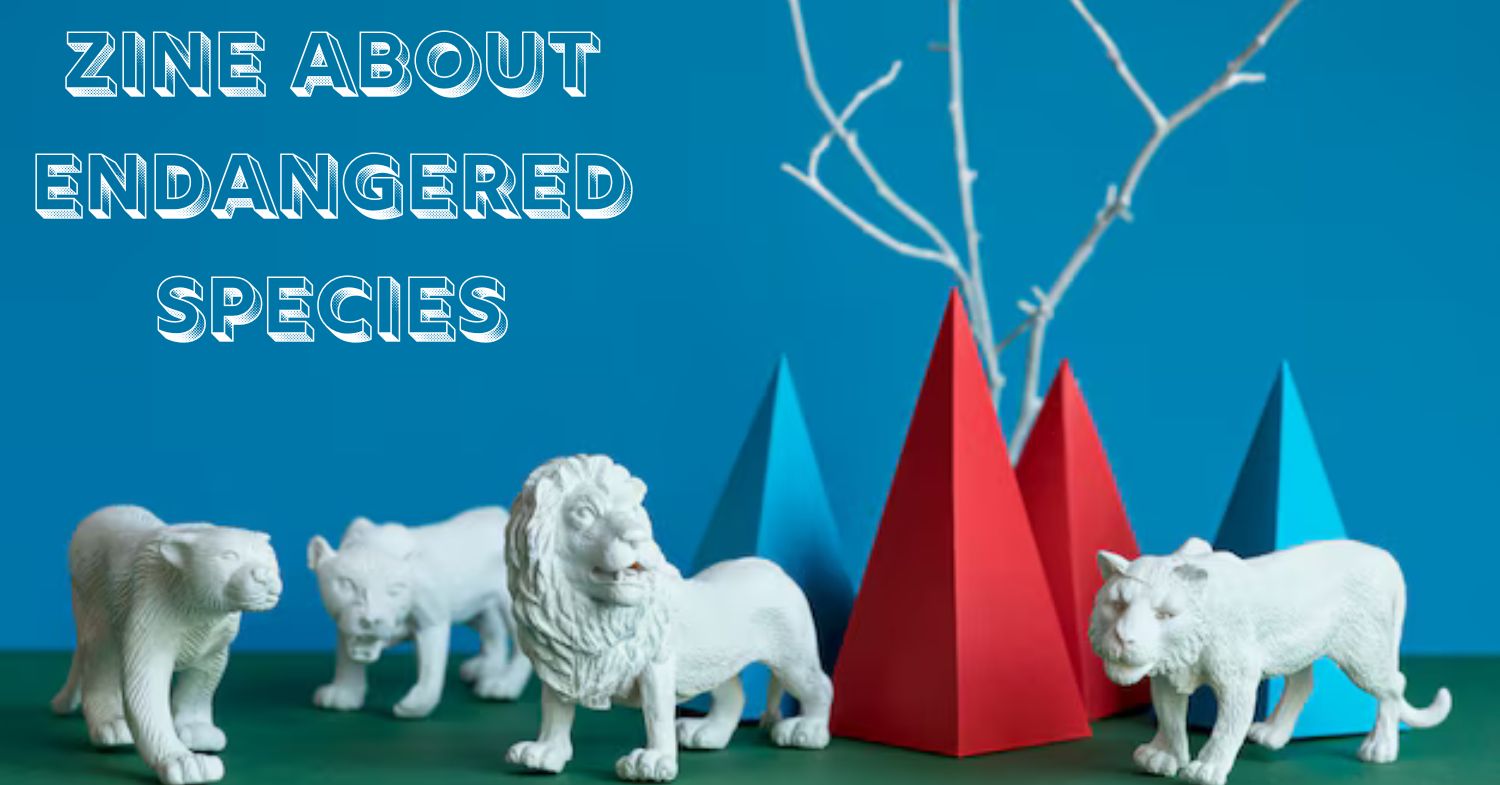More than merely a creative endeavor, a zine about threatened species is a potent tool for education, inspiration, and advocacy for animal protection. In a world when habitat loss, climate change, and human activity threaten many species with extinction, zines provide a special means of raising awareness of their situation. Combining facts, narrative, and art, these self-published books can enthrall readers and emphasize the need of preserving the diversity of our earth. This post explores the reasons behind zines about threatened species, their construction, and their influence on conservation initiatives.
The Zine About Endangered Species Idea
Often with a concentration on niche subjects, a zine—short for “magazine” or “fanzine—is a little, self-published pamphlet. Regarding designing a zine on threatened species, the opportunities are almost unlimited. These zines might investigate anything from species-specific knowledge to the effects of human activities on ecosystems to the value of conservation initiatives. They might include images, personal writings, drawings, and even animal expert interviews. These zines appeal to a broad audience since they can combine information with creativity, therefore enhancing their potency.
Zine artists help to spread awareness of the pressing need of safeguarding fragile species by selecting endangered animals as their topic. These zines might initiate a discussion among readers who might not have given the seriousness of the extinction catastrophe any thought. Moreover, zines are easily available and reasonably priced, therefore guaranteeing that important conservation messages find different groups of people.
Why Conservation of Endangered Species Calls for Attention
The situation of threatened species influences not only the individual animals but also the ecosystems they live in and the wider surroundings. Maintaining ecological equilibrium depends on many species, hence their absence can have terrible effects on whole environments. For instance, the extinction of pollinators like bees could affect food output, while the loss of predators like tigers might cause overpopulation of some prey species, therefore influencing vegetation and other fauna.
Human activities including pollution, deforestation, poaching, and climate change have sadly sped up the pace of extinction. Studies estimate that throughout the next few decades, almost one million species could vanish. Using a zine on threatened species to highlight these problems can be rather important in informing the public and motivating action to buck these trends.
Making a Zine About Threatened Species
Creating a zine on threatened species calls both knowledge as well as imagination. Usually starting with choosing a particular emphasis or theme, the procedure starts The zine might, for example, center on a specific collection of animals—such as marine life, rainforest species, or critically endangered mammals. Alternatively, it might look at more general subjects like how environmental changes affect animals or how sustainable living might help to encourage preservation.
Getting accurate and convincing data comes next once the theme is decided upon. This could call for looking at scientific papers, speaking with animal groups, or perhaps contacting professionals. The material can then be matched with graphic components including collages, hand-drawn graphics, or photos. These creative details not only make the zine aesthetically appealing but also enable more effective communication of its ideas.
Designing the layout and distributing the zine come last. Zine producers can decide to publish digital versions online or print actual copies. By means of platforms like social media or websites devoted to environmental problems, the zine can be disseminated to a wider audience, therefore optimizing its impact.
The Part Art Plays in Conservation
Zines on threatened species depend much on art since it has always been a great tool for narrative. Images of animals can arouse feelings that words cannot quite express. More successfully than a page full of facts, a wonderfully painted picture of a polar bear suffering on a melting ice cap can help to highlight the urgency of climate change.
Furthermore, zine art can simplify difficult scientific ideas into easily absorbed material for readers of many backgrounds. By means of infographics, illustrations, or cartoons, zines can clarify issues such as habitat degradation or conservation techniques, therefore enabling children, teenagers, and adults equally to access them. Zines are a great weapon in the struggle to rescue threatened species since they can motivate and teach via images.
Involving Communities using Zines
A zine about endangered animals has among its most powerful features the capacity to involve and empower local communities. Zines promote engagement and involvement unlike conventional media, which sometimes seems one-sided. By organizing zine-making seminars, shows, or animal conservation debate panels, creators can include their nearby towns. These gatherings not only raise awareness but also help everyone to feel accountable for preserving threatened species.
Zines also give a chance to elevate the voices of underprivileged groups typically leading front-stage for environmental preservation. For example, indigenous people have thorough awareness of ecosystems and species. Including their points of view in a zine can draw attention to their priceless efforts to preserve threatened species and support environmental activism by means of inclusiveness.
Zines’ Effect on Conservation Knowledge
Readers as well as the larger conservation movement could be permanently changed by a zine on threatened species. Zines can motivate people to embrace more sustainable lives, assist conservation projects, or even call for legislative changes by offering material in an approachable and artistic form. In classrooms, they can also be teaching aids since they enable kids to grow early awareness of environmental problems and the need of maintaining diversity.
Moreover, zines help to link the general people with scientists. Although reports and academic papers can seem unapproachable, zines help to adapt difficult research into interesting material for daily readers. This accessibility guarantees that important knowledge on threatened species gets to a larger audience, hence increasing awareness and action possibilities.
Conclusion
One significant and artistic approach to help to preserve wildlife is to create a zine about endangered species. These zines may captivate readers, start discussions, and motivate action to save delicate species by fusing art with education. Making a zine can be your method of changing the world whether your interests are environmental, artistic, or merely personal. Start small, distribute widely, and let your voice be a part of the developing movement to rescue threatened species for next generations.
FAQS
What is a zine about endangered animals?
Combining art, narrative, and factual knowledge, a zine on endangered animals is a self-published pamphlet meant to increase awareness of species at danger of extinction and support wildlife protection.
How might a zine support threatened species?
Through teaching readers about the dangers endangering species present, zines can motivate readers to support environmental protection laws, change their own behavior, and advocate sustainable practices.
For a zine about threatened species, what should I feature?
Illustrations, pictures, articles, infographics, and stories about threatened species, their habitats, and methods of preservation might all find place in a zine. Including correct, carefully investigated material is crucial.
Where ought I to distribute my zine?
Local events, community spaces, colleges, libraries, and internet sites devoted to environmental issues can all help you share your zine.
Does producing a zine call for artistic ability?
Not absolutely either. Zines are about original expression and originality, hence even basic artwork or handwritten content can have a big impact. The message you wish to relay counts most.

